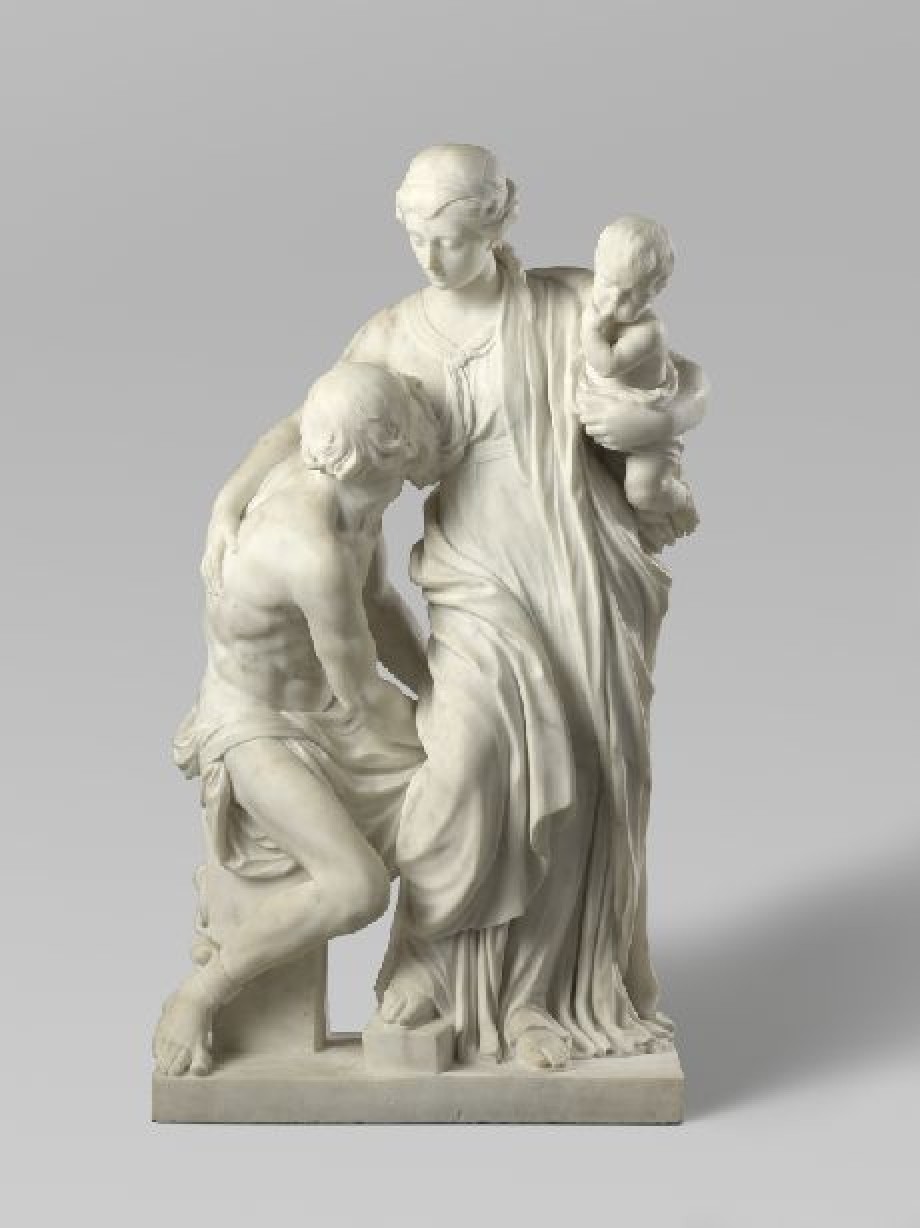
Jerôme Duquesnoy II
More about Jerôme Duquesnoy II
Jerôme Duquesnoy II is a sculptor and architect born in Brussels and who comes from an artistic family. His father and teacher is the sculptor Hieronymus Duquesnoy I (ca. 1570-1641/42). Duquesnoy is the brother of the sculptor François du Quesnoy (1597-1643).
Jerôme is an exceptionally trained professional, but always remains in the shadow of his brother François, who is a more original and influential artist. Jerôme grafts his art off of that of his older brother. The art of Duquesnoy is in general openly Classicist: sober, with a sensitive Realism and controlled expression. Jerôme Duquesnoy is a successful sculptor who stands out in the art of portrait.
The high point at the end of his career is a collective work of art: the Tomb monument of Bishop Antonius Triest (1576-1657) in the choir of the Saint Bavo Cathedral in Ghent. The artist designs an architectural setting of white and black marble. He introduces the Italian example into the Southern Netherlands whereby the image of the deceased is the focal point of an allegorical setting. Duquesnoy freely borrows from his brother, Michelangelo (1475-1564) and Bartolomeo Ammannati (1511-1592).
1602
Jerôme Duquesnoy II is born in Brussels.
1618
Duquesnoy departs for Rome with his brother François. According to report, the brothers have a falling out after a disagreement.
Before 1640
Duquesnoy works primarily in Spain and Portugal during this period.
Between 1641 and 1643
After a stay of 6 months in Tuscany, Duquesnoy is present in Rome. There he has contact with his brother François du Quesnoy. Jerôme accompanies his brother on a trip to Paris, where François du Quesnoy can become the Director of a department of sculpture in the yet to be constructed Académie Royale de Peinture et de Sculpture. François becomes sick on the way and dies in Livorno on 19 July 1643.
Jerôme returns to Brussels and among other things takes models and drawings out of his brother's studio.
1644
The council of Brabant compensates Duquesnoy for a Saint Thomas destined for the Cathedral of Saint Michael and Saint Gudula in Brussels.
1645
Duquesnly is named as right-hand man of architect Jacob Francart (1583-1651). In 1646 he draws the plan for the Our Blessed Lady chapel in the Cathedral of Saint Michael and Saint Gudula and leads the construction.
1646
Duquesnoy completes 3 more apostle images for the Cathedral of Saint Michael and Saint Gudula.
After 1646
Images of Saint Phillip and Saint Matthew are made for the Our Blessed Lady of Kapelle Church in Brussels.
1651
Architect Jacob Francart dies. The consequence for Duquesnoy is that thenceforward he goes through life as "architecte, statuaire et sculpteur de la Cour". In that capacity Duquesnoy completes several portraits of Governor Leopold Wilhelm (1614-1662). (Kunsthistorisches Museum, Vienna)
A contract for the tomb monument of Bishop Antonius Triest (1576-1657) in the choir of the Saint Bavo Cathedral in Ghent is drawn up. Already in 1642, Antonius Triest approached François du Quesnoy, but the artist declined the commission because of his upcoming visit to France. François du Quesnoy nevertheless made a few terracotta models for putti. Although the new contract does not mention the models, Jerôme took over the designs of his brother.
After 1651
The marble Saint Ursula, a commission by the family Thurn and Taxis, is placed in the Our Blessed Lady of Zavel Church in Brussels.
1654
Duquesnoy lives in Ghent to finish the tomb of Antonius Triest.
28 september 1654
Jerôme Duquesnoy II dies in Ghent. On the charges of sodomy, Duquesnoy's life was ended.
Text: Matthias Depoorter
